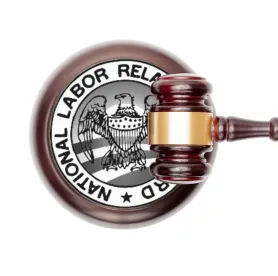The pendulum has swung again in the National Labor Relations Board’s (NLRB) continued effort to distinguish employees from independent contractors.
In FedEx Home Delivery, 361 NLRB 610 (2014) (FedEx II), the NLRB held that the inquiry would be guided by the non-exhaustive common-law factors enumerated in the Restatement (Second) of Agency, Section 220 (1958), and that “all of the incidents of the relationship must be assessed and weighed with no one factor being decisive.” Under FedEx II, entrepreneurial opportunity for gain or loss is just “one aspect of a relevant factor that asks whether the evidence tends to show that the putative contractor is, in fact, rendering services as part of an independent business.”
Five years later, in SuperShuttle DFW, Inc. 367 NLRB No. 75 (2019), the NLRB rejected that approach. Instead, it endorsed the notion that entrepreneurial opportunity for gain or loss is the “animating principle” when determining whether workers are employees or independent contractors.
Two years after the SuperShuttle decision, in The Atlanta Opera, Inc. 371 NLRB No. 45 (2021), the NLRB invited the parties and amici to brief whether it should reconsider the SuperShuttle standard. This week, in a much-anticipated decision, the NLRB overruled SuperShuttle and returned to the FedEx II standard.
That is not to say that entrepreneurial opportunity is inapposite to the NLRB’s analysis. To the contrary, the NLRB explained that it will consider not only whether the putative contractor has a significant entrepreneurial opportunity, but also whether the putative contractor: (a) has a realistic ability to work for other companies; (b) has proprietary or ownership interest in their work; and (c) has control over important business decisions, such as the scheduling of performance; the hiring, selection, and assignment of employees; the purchase and use of equipment; and the commitment of capital.
At the same time, the NLRB will consider and weigh all of the traditional common-law factors. “As with all other relevant factors, the weight given to whether a putative contractor renders services as part of an independent business will depend upon the factual circumstances of the particular case.”
The NLRB made clear that actual, rather than theoretical, entrepreneurial opportunity is what matters.
We also reaffirm today the principle that ‘if a company offers its workers entrepreneurial opportunities that they cannot realistically take, then that does not add any weight to the [c]ompany’s claim that the workers are independent contractors.’
As the NLRB noted in its FedEx II decision, the NLRB has been careful to distinguish between actual opportunities, which allow for the exercise of genuine entrepreneurial autonomy, and those that are circumscribed or effectively blocked by the employer.
NLRB Chair Lauren McFerran hailed the NLRB’s decision.
In today’s decision, the Board returns to the independent contractor test articulated in FedEx II, and reaffirms the Board’s commitment to the core common-law principles that the Supreme Court has determined should guide the Board’s consideration of questions involving employee status …. Applying this clear standard will ensure that workers who seek to organize or exercise their rights under the National Labor Relations Act are not improperly excluded from its protections.
The NLRB’s decision may be challenged on appeal. In the meantime, its new standard should make it easier for workers, especially those in the on-demand or sharing economy, to organize collectively and secure NLRA protections. Thus, companies in that arena, and others that use putative independent contractors, should review their applicable agreements in light of the NLRB’s new standard.



 />i
/>i
